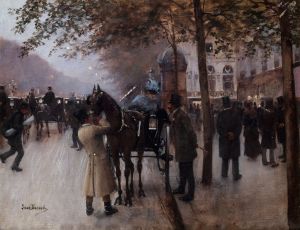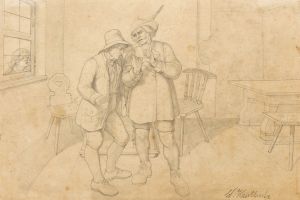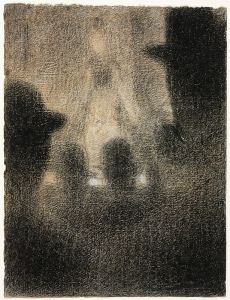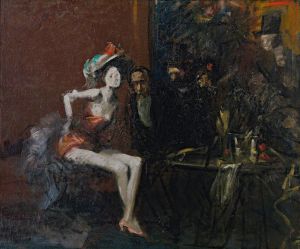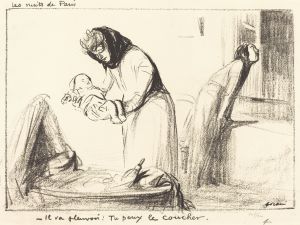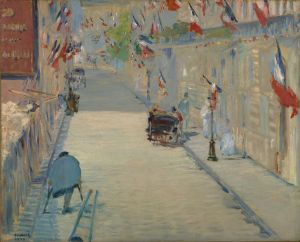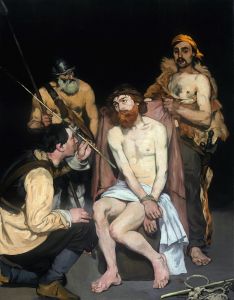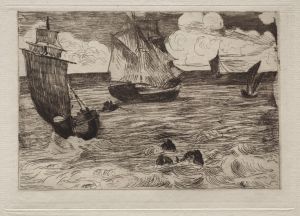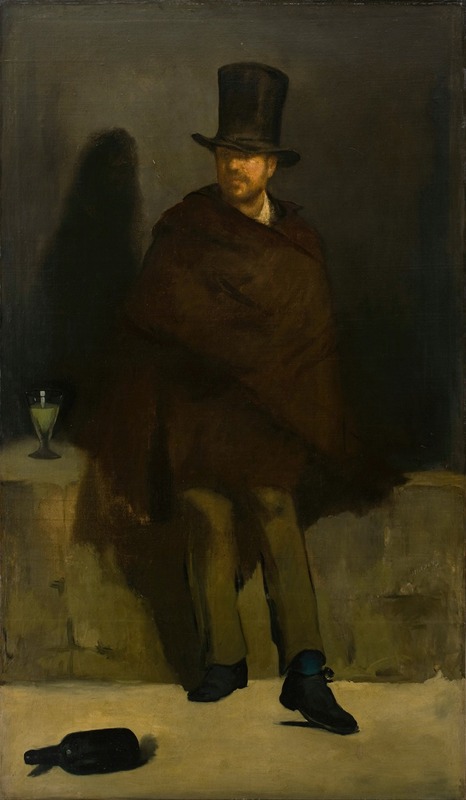
The Absinthe Drinker
A hand-painted replica of Édouard Manet’s masterpiece The Absinthe Drinker, meticulously crafted by professional artists to capture the true essence of the original. Each piece is created with museum-quality canvas and rare mineral pigments, carefully painted by experienced artists with delicate brushstrokes and rich, layered colors to perfectly recreate the texture of the original artwork. Unlike machine-printed reproductions, this hand-painted version brings the painting to life, infused with the artist’s emotions and skill in every stroke. Whether for personal collection or home decoration, it instantly elevates the artistic atmosphere of any space.
"The Absinthe Drinker" is an early painting by the French modernist artist Édouard Manet, created between 1858 and 1859. This work is significant as it marks Manet's first major painting and his initial foray into the themes and techniques that would characterize much of his later work. The painting is notable for its depiction of a solitary figure, a motif that Manet would revisit throughout his career.
The painting portrays a man dressed in a long, dark coat and top hat, standing alone in a desolate urban setting. He holds a cane in one hand and a glass of absinthe in the other, which is a potent alcoholic beverage that was popular in 19th-century France. The figure is believed to be modeled after a real person, possibly a ragpicker named Collardet, whom Manet encountered in the streets of Paris. This choice of subject reflects Manet's interest in contemporary life and his desire to capture the essence of modernity.
"The Absinthe Drinker" is executed in a realist style, with a muted color palette dominated by browns and grays. The composition is relatively simple, focusing on the lone figure and his immediate surroundings. Manet's brushwork is loose and expressive, a technique that would become more pronounced in his later works. The painting's somber tone and the isolation of the figure suggest themes of alienation and the darker aspects of urban life, which were common concerns in the art and literature of the time.
When Manet submitted "The Absinthe Drinker" to the Paris Salon in 1859, it was rejected by the jury. This rejection was a significant moment in Manet's career, as it highlighted the challenges he would face in gaining acceptance from the traditional art establishment. Despite this setback, Manet continued to develop his style and pursue his artistic vision, eventually becoming a central figure in the transition from Realism to Impressionism.
"The Absinthe Drinker" is often seen as a precursor to Manet's later works, such as "Olympia" and "Le Déjeuner sur l'herbe," which would further challenge conventional artistic norms and provoke controversy. While "The Absinthe Drinker" may not be as well-known as some of Manet's other paintings, it remains an important work in understanding the evolution of his artistic career and the broader context of 19th-century French art.
Today, "The Absinthe Drinker" is housed in the Ny Carlsberg Glyptotek in Copenhagen, Denmark. The painting continues to be studied and appreciated for its historical significance and its role in the development of modern art. Through this work, Manet laid the groundwork for a new approach to painting that would influence generations of artists to come.





